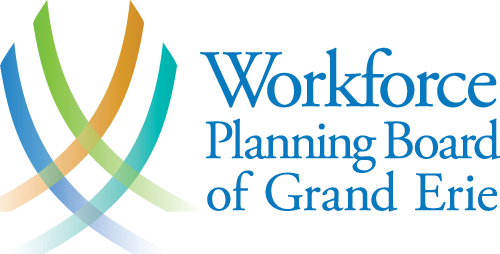
Workforce Series – Interview with Stephen Chary
It’s Ontario Agriculture Week and in this week’s Workforce Series we talk to Stephen Chary who works for Chary Produce, a second generation vegetable and fruit farm in Oakland, Ontario located in Brant County.
Stephen has worked at his family’s farm from a young age learning about everything to do with running a farm – from planting and cultivating to harvesting the farm’s extensive crop.
In addition to completing a welding ticket in his last few years of high school through a co-op program, Stephen recently participated in the newly developed Agricultural Equipment Operator Program offered by Conestoga College to refine some of his skills. The program focuses on the operation and maintenance of agricultural equipment, which he applies to keeping machinery running smoothly, performing repairs and troubleshooting unforeseen issues.
Stephen’s existing pool of knowledge is formidable, however he feels he still has some things to learn yet, such as the business side of farm operations and crop science as it relates crop infestations and disease – a common but immense challenge that many farms face.
Our recent Work-Life Balance Study tells us “28% of respondents spend over 9 hours of their average day working”. In our feature Stephen talks about the demands of farm operations as well as the rewards, the importance of time-management skills, the value of having mentors and what his aspirations are for the future.
Watch our interview with Stephen here: https://youtu.be/9ByYlRCS6lE

Some parting highlights from talking with Stephen:
On an average day, Stephen is up between 5:30am and 6:00am and heads to the barn to meet his uncle who will provide an overview of the day with him along with providing him instructions. Instructions range depending on the season – ranging from harvest season which is taking place now, to planting season where he will find himself doing things like setting up water trucks in the fields and fertilizing crops. In the winter time – it’s often maintenance and equipment repair, getting ready for when the busy season hits.
“I’ve definitely always had people around me who were mentors”. This has included mechanics and equipment operators and people like his uncle and father who coached him in crop cultivation and business operations.
On the importance of time-management and planning – “With only so many hours in the day, it hasn’t always been easy to figure out what the most important thing is to do first. The trick is to figure out the priorities then and move onto the next thing, and then managing that in a work environment that can have many unpredictable factors”
On developing skills – “the more skills you have the better”. Stephen feels he can apply his skilled trades skills to future job prospects and says maintaining a focus on machining and science throughout high school are helpful to working in the agricultural field. He also recommends working on a farm for a summer job to learn a lot quickly.
Thank you to Stephen for sharing his story with us! Stay tuned for next week, when we explore Caleb’s automotive industry background, training and experiences!
Looking to explore a career or find a job? Check out Grand Erie Jobs – the biggest career and job site in our region!









